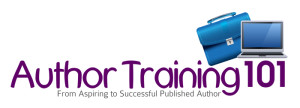 If you plan to self-publish your nonfiction book, more than almost any other type of aspiring author, you need a business plan. As the publisher of your own start-up publishing company, the business plan you create for your book will guide you to produce a marketable product and to run a successful publishing company.
If you plan to self-publish your nonfiction book, more than almost any other type of aspiring author, you need a business plan. As the publisher of your own start-up publishing company, the business plan you create for your book will guide you to produce a marketable product and to run a successful publishing company.
Of course, all writers need to produce business plans for their books if they want to increase the chances of them selling well once released. And whether you traditionally publish or self-publish, a business plan for a book typically has common elements. As mentioned in my last post, a book proposal has served as the standard business plan for a book for centuries. No matter what type of book you plan to write (even fiction), a nonfiction book proposal offers a business-plan template. If your indie book business plan includes these sections, it will have a sound start and help you evaluate your book for salability.
As an indie publisher, however, your business plan should include some additional sections that typically are not found in a book proposal. The following are some suggested sections you will find useful not only in planning your self-published book but in running your publishing company. (The standard sections, along with reasons why you should include them, can be found in this post.)
8 Indie Business Plan Sections
- Your Definition and Vision of Success
It’s extremely difficult to achieve success if you don’t know what it looks like for you or if you haven’t defined success for yourself. While the publishing industry defines success in terms of book sales, this might not be how you previously have defined it. Now that you are a publisher, sales must become part of your definition. If you want to publish a successful book, determine how many sales that will take. Must you sell 500, 1,000 or more copies per year? (A “break-even analysis” will help you determine this.) How much money do you want to make? What’s your vision of success as an author and publisher? Without such a vision, you may flounder around never knowing what steps to take to succeed.
- Long Term Goals
Most companies have monthly, quarterly, semi-annual, and annual goals to meet. They may even offer bonuses to employees if they meet these goals. By achieving small successes along the way, the company continuously moves toward its vision of success—its long-term goal. As a publisher, it’s up to you to create the goals for your company. These can be goals for when and how to publish your book, how many books to publish per year, how many books to sell per year, or how to promote each book. Your long-term goals can also include how much money you plan to earn from your book.
- A “Resources Necessary to Complete the Book” Calculation
Before you begin any business, or any project, be sure you can afford it. Aspiring authors are often shocked at the cost of editing a manuscript, for instance, which can prove more costly than book design. You won’t be able to complete your break-even analysis without going through an exercise to determine what resources you need to complete your book. At the minimum, these can include:
- ISBN numbers
- Design
- Editing
- Ebook conversion
- Copyright
- Bar codes
- Permissions
- Shipping
- Review copies
- Travel
Be sure you have the funds to take your project to completion before you begin.
- A Break-Even Analysis
It’s extremely difficult to achieve success if you haven’t defined it. The publishing industry defines success in terms of book sales, and, as a publisher, sales must become part of your definition. Must you sell 500, 1,000 or more copies per year to earn back your investment and start making money? A “break-even analysis” will help you determine this. This entails knowing what it cost to produce your book.
- A Profit and Loss Statement
To keep track of how your company fares financially, you need a profit and loss statement. This allows you to determine if your start up is getting out of the red and into the black. You need to know if your company is making or losing money. Good businesspeople keep close tabs on income and expenditures.
- Deadlines and Timelines
It’s important to build deadlines into your planning. This ensures you get your books published in a timely manner. It also helps you work with contractors. This why having both a timeline with deadlines built into it, and a list of contractors and their deadlines, are good additions to your list of business plan sections. If you have additional resources upon which you rely, create this list and add it to your essentials as well.
- Contractor Lists, License Information and Legal Issues
In this section, create a list of contractors you will use to help you run your business—editors, designers, virtual assistants, accountants, etc. Include their contact information. Then make a list of the licenses you will need, such as to set up your business in the county where you live, with the tax office, etc. Then make a list of additional business-related things you need to do, for example, set up bank accounts or incorporate your business or obtain legal contracts. Create a checklist for the licenses and contracts.
- Branding Plans
A good publisher always thinks beyond one book. In fact, you’ll sell more books if you write more books. And you’ll earn more money as an author if you brainstorm additional ways to build a business around your book, such as courses, coaching, teaching, or speaking. Consider how you can brand yourself—and make more money—with books, products and services. In this section, include plans for a website, logo and how you might develop your brand with more books and related products and services.
Don’t forget to include the standard sections in your indie book’s business plan. Find them here. My new book, The Author Training Manual, explains how to write a business plan for your self-published book.
 The Author Training Manual: Develop Marketable Ideas, Craft Books That Sell, Become the Author Publishers Want, and Self-Publish Effectively, Nina Amir’s new book, provides all the information you need to create a business plan for your book and to train you to become a successful author. However, you also can get author training from Nina during the next Author Training 101 LIVE course. Starting May 6, you will receive audio and video lessons that correspond with the chapters. And, while you use take the course and complete the training exercises in the book, you get support during 8 weeks of group coaching. You’ll also get a bonus proposal/business plan template and more! Only 20 spots! Get more information and claim your spot by clicking here.
The Author Training Manual: Develop Marketable Ideas, Craft Books That Sell, Become the Author Publishers Want, and Self-Publish Effectively, Nina Amir’s new book, provides all the information you need to create a business plan for your book and to train you to become a successful author. However, you also can get author training from Nina during the next Author Training 101 LIVE course. Starting May 6, you will receive audio and video lessons that correspond with the chapters. And, while you use take the course and complete the training exercises in the book, you get support during 8 weeks of group coaching. You’ll also get a bonus proposal/business plan template and more! Only 20 spots! Get more information and claim your spot by clicking here.
Photo courtesy of Stuart Miles | freedigitalphotos.net